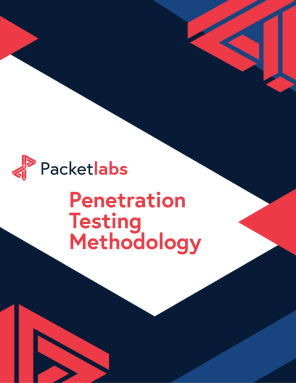What to Know About Emergency Directive 26-01
Would you like to learn more?
Download our Pentest Sourcing Guide to learn everything you need to know to successfully plan, scope, and execute your penetration testing projects.
In mid-October 2025, U.S. cybersecurity authorities issued an emergency directive to federal civilian agencies, warning of an “imminent threat” to networks using F5 products following a breach at F5, a major network security vendor.
CISA (a part of the Department of Homeland Security that manages risks to the U.S.'s cyber and physical infrastructure) issued Emergency Directive 26-01 following the company's disclosure that a foreign threat actor had maintained long-term, persistent access to its internal development and engineering environments using source code.
Officials warned that threat actors could exploit the vulnerabilities to steal credentials, move laterally through networks, and potentially take full control of targeted systems. F5 said it first discovered the attack in August but did not disclose exactly when it began.
"This directive addresses an imminent risk," Nick Anderson, CISA's executive assistant director for cybersecurity, stated during a news briefing. "A nation-state actor could exploit these flaws to gain unauthorized access to embedded credentials and API keys. That's an unacceptable risk to federal networks."
What Triggered Emergency Directive 26-01
F5 acknowledged that a sophisticated, state-linked actor had infiltrated its internal systems and potentially exfiltrated source code, proprietary configurations, and other sensitive data.
Because F5’s suite (notably its Big-IP devices) is deeply embedded across government, enterprise, and cloud environments, the breach posed a supply chain risk, meaning vulnerabilities in F5 could be propagated broadly.
CISA, the federal cybersecurity agency, declared that the conditions created by the breach “pose an unacceptable risk” and required immediate patching or mitigation by agencies using F5 products.
The Implications of the Potential F5 Breach
Under the directive:
All civilian federal agencies were ordered to patch affected F5 systems within one week.
The directive underscores that F5-based environments across federal networks are now under a heightened threat posture.
The government has not publicly named the responsible actor, though it described the attacker as “highly sophisticated” and refrained from attributing the breach to a particular nation in official communications.
This order marks one of the more severe federal cybersecurity responses in recent memory, akin to past directives tied to vulnerabilities in critical software components.
Why This Matters Beyond F5
Supply chain exposure: The F5 breach is not just about one vendor being compromised. Because many agencies and organizations use F5’s tooling as part of their infrastructure, a compromise here can cascade across numerous systems.
Credential and configuration leakage risk: Stolen credentials and internal configurations may allow attackers to impersonate legitimate systems, bypass defenses, or rollback patches.
Systemic risk to federal trust and continuity: A successful exploit in a major vendor used in federal networks opens the risk of service disruption, data exfiltration, or greater systemic compromise.
Mandated response and scrutiny: The directive puts pressure on IT teams across federal agencies to respond quickly, often under constrained timelines and complex environments post-breach.
Challenges and risks related to this directive include, but are not limited to:
Patch complexity and compatibility: Many legacy systems and federated environments rely heavily on F5 gear. Upgrades or patches may conflict with other systems or require downtime.
Resource constraints: Many agencies have limited cybersecurity staff. Rolling out a mass patch program — some possibly in critical infrastructure on short notice is nontrivial.
Uncertainty and incomplete disclosure: Because the government has not publicly named the attacker or fully disclosed the extent of what was stolen, agencies must proceed on threat models that may evolve.
Detection and response gaps: Even patching may not eliminate dormant backdoors or pre-exploitation footholds. Detecting latent access and previously inserted malware remains a challenge.
What Are the Top Takeaways From the F5 Breach?
Zero Trust and defense in depth: This incident reinforces that perimeter defenses alone aren’t sufficient. Agencies and organizations must assume a compromise and build resilient detection, segmentation, and response layers via Zero Trust architecture.
Supply chain scrutiny is now essential: Procurement and vendor risk management must be elevated. Software providers should be required to demonstrate strong security posture, code auditability, and secure development practices.
Rapid, coordinated incident response: Agencies must maintain mature IR (Incident Response) playbooks, threat hunting capability, and cross-agency coordination for such national-scale directives.
Continuous monitoring and validation: After patching, continuous verification is required to ensure no residual footholds exist. Threat hunting, endpoint monitoring, and anomaly detection must be active.
Transparency and communication: Stakeholders (from agency management to contractors) need clear guidance and transparency about the order’s scope, urgency, responsibilities, and technical details.
Conclusion
The F5 breach and the resulting CISA emergency directive mark a watershed moment in how deeply supply chain security can affect national cyber posture. What may seem like a vendor-level incident quickly scales into a federal crisis.
For cybersecurity teams, this moment is a stark reminder: trust in software must be continually validated. Defense is no longer about reacting to visible threats: today, resilience is about anticipating hidden, propagated risks before they set off cascading damage.
Contact Us
Speak with an Account Executive
Interested in Pentesting?

Penetration Testing Methodology
Our Penetration Security Testing methodology is derived from the SANS Pentest Methodology, the MITRE ATT&CK framework, and the NIST SP800-115 to uncover security gaps.
Download Methodology
Pentest Sourcing Guide
Download our Pentest Sourcing Guide to learn everything you need to know to successfully plan, scope, and execute your penetration testing projects.
Download GuideExplore in-depth resources from our ethical hackers to assist you and your team’s cyber-related decisions.

September 13 - Blog
Why Multi-Factor Authentication is Not Enough
Knowing is half the battle, and the use and abuse of common frameworks shed insight into what defenders need to do to build defense in depth.

November 19 - Blog
The Top Cybersecurity Statistics for 2024
The top cybersecurity statistics for 2024 can help inform your organization's security strategies for 2025 and beyond. Learn more today.

October 24 - Blog
Packetlabs at SecTor 2024
Packetlabs is thrilled to have been a part of SecTor 2024. Learn more about our top takeaway's from this year's Black Hat event.







